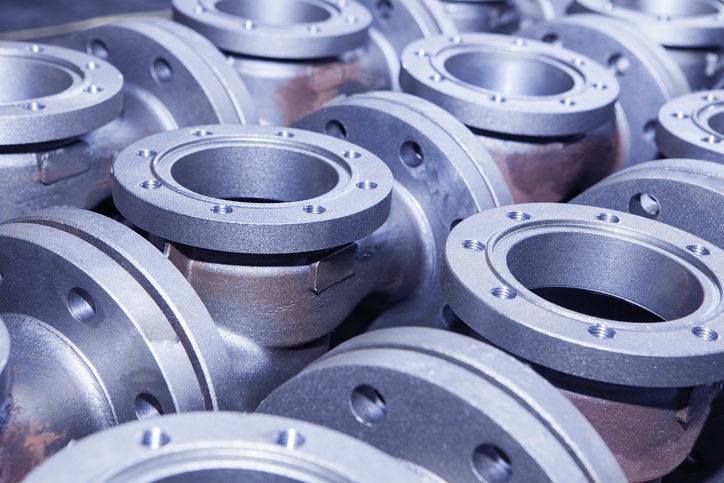One of the most critical decisions machined parts manufacturers face during the production process is material selection. The type of a material that a manufacturer chooses for any given project can impact nearly every aspect of the machined metal parts. The right material can enhance the performance and functionality of the end-product, while a poor choice of material can result in defects, product failures, or even major safety issues.
Because specific project requirements can vary so drastically, even within the same industry, material selection is far from a straightforward process. Material properties like mechanical strength, chemical composition, and resistance to corrosion must be balanced with design and functional requirements to ensure the metal parts support and even elevate the end-product. It should come as no surprise, then, that making the best material selection for your project requires an extremely high level of expertise.
Material Selection for Machined Metal Parts
When it comes to producing metal parts for diverse applications, manufacturers have a long list of materials to choose from. Some of the most common include:
- Aluminum — Lightweight and corrosion-resistant, aluminum is suitable for a wide range of applications, including those in the aerospace and automotive industries.
- Steel — One of the most widely used materials due to its strength and durability, steel comes in various grades and types — including carbon, stainless, and tool — each with unique properties.
- Titanium — Lightweight and incredibly strong, titanium is ideal for aerospace and automotive components that require a high strength-to-weight ratio.
- Brass — Known for its excellent machinability, corrosion resistance, and attractive appearance, brass is commonly used in the manufacturing of decorative and precision parts.
Other materials commonly used by machined parts manufacturers include nickel, copper, cast iron, bronze, zinc, lead, tungsten, and a long list of other metals and alloys.
Selecting the right material relies on the manufacturer’s knowledge of the mechanical, thermal, and chemical properties of each material. This enables manufacturers to foresee how a finished part will perform under certain conditions. Manufacturers also need to know how compatible each material is with various machining techniques (e.g. CNC, turning, milling, etc.) so the manufacturing process can be optimized for efficiency and accuracy.
How Machined Parts Manufacturers Make the Right Selection
Alongside material properties, machined parts manufacturers also need to take into account the specific application the part will be used for. This requires a familiarity with a number of different factors.
First, metal manufacturers should have an understanding of industry-specific needs. For instance, the aerospace and automotive industries often require parts with high strength-to-weight ratios, while the medical industry may prioritize biocompatibility and corrosion resistance.
Several industries also have various regulatory requirements and compliance concerns. Again, the healthcare industry is a good example. Manufacturers must select materials that can help ensure the end-product meets the highest standards.
Manufacturers should also bear in mind the demands placed on the part by the environmental and operational conditions. Some industries, like oil & gas, require components to perform under extreme temperature and pressure conditions, for example.
The Material Selection Process
So, how do machined parts manufacturers actually go about selecting the right material for your component? Material selection often involves multiple steps and extensive collaboration between designers, engineers, and manufacturers. But in general, the process might look something like this:
Step 1: Define Requirements and Identify Critical Properties
First, part designers, engineers, and manufacturers will clearly define the functional and performance requirements of the machined part. Then, manufacturers will determine what material properties will be critical for the part.
Step 2: Perform a Cost Analysis
Next, machined parts manufacturers will need to perform a cost analysis of different options to find the solution that will best fit with their customer’s budget. Material procurement, machining processes, and long-term maintenance costs will all factor in here.
Step 3: Initial Material Evaluation
Once the requirements have been determined, manufacturers will perform an initial material evaluation. This can be an extensive process involving creating a list of potential options, performing comparisons, testing materials, and evaluating materials for their environmental impact.
Step 4: Material Specification
When the material has been selected, manufacturers will need to specify the grade, form, and any other specific requirements for the supplier, such as heat treatment or surface finish.
Step 5: Continuous Evaluation
Material selection doesn’t end when production is finished. It’s important to evaluate the material’s performance throughout the lifecycle of the part to assess whether improvements are needed.
Partner with Expert Machined Parts Manufacturers at Advantage Metal
Our team of experts at Advantage Metal Products has decades of combined experience in the metal manufacturing industry. For more than 30 years, we’ve been trusted providers of metal stamping, machining, and fabrication services for a wide range of industries. Whether you need assistance with material selection, engineering support, project management, or assembly, we pride ourselves on being a one-stop metal manufacturing shop with the knowledge and technology to meet all of your metal parts needs.
Get in touch today to get started on your next project.

